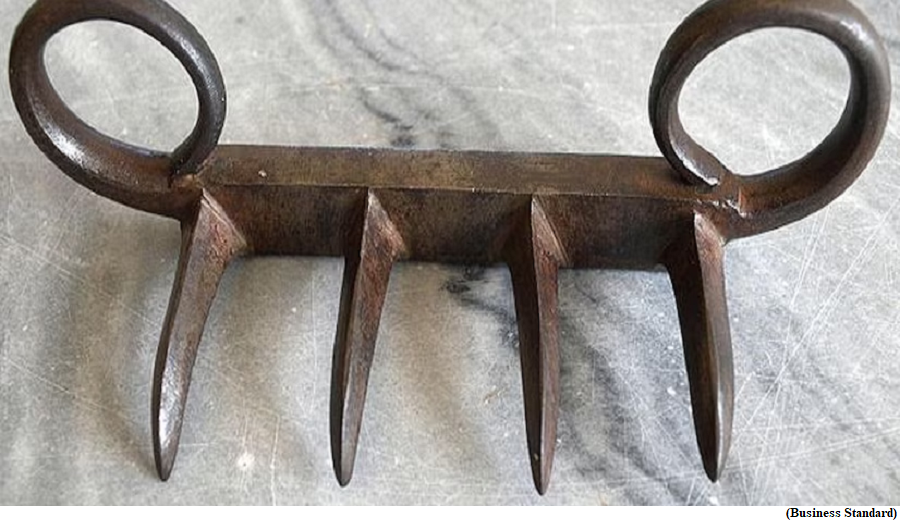Climate change will make top global ports unusable by 2050 as sea levels rise (GS Paper 3, Environment)

Why in news?
- A recent study has revealed that some of the world's largest ports could become inoperable by 2050 due to rising sea levels caused by climate change.
- The study, titled ‘Global Maritime Trends 2050’, was commissioned by Lloyd's Register and Lloyd's Register Foundation, leading entities in the shipping services sector.
Key Highlights:
- The study highlights that weather-related disruptions are already impacting global ports, including a drought affecting operations in the Panama Canal, a significant waterway.
- It further states that out of the world's 3,800 ports, a third are located in tropical regions highly susceptible to the severe effects of climate change.
- Among the most vulnerable are the ports of Shanghai, Houston, and Lazaro Cardenas in Mexico, which are among the world's largest.
- These ports could potentially be rendered inoperable by 2050 with a mere 40 cm rise in sea levels. Other key ports, including Rotterdam, are already under pressure.
Recommendations:
- The study emphasises the need for countries to invest in enhancing the efficiency and resilience of their ports and logistics infrastructure to keep up with the growing demand for imports and consumption.
- For ports like Shanghai, which are highly susceptible to rising sea levels, the establishment of flood defense systems similar to Holland's Maeslant Barrier and London’s Thames Barrier could be a viable solution.
Way Forward:
- The findings underscore the urgent need for more robust climate action and the adoption of new technologies to decarbonise the maritime sector.
21st edition of Varuna (Varuna-23)
(GS Paper 3, Defence)
Why in news?
- Recently, the Phase II of the 21st edition of Varuna (Varuna-23) bilateral exercise between Indian and French Navy was conducted in the Arabian Sea.
- The exercise witnessed participation of guided missile frigates, tanker, Maritime Patrol Aircraft and integral helicopters from the two sides.

Details:
- The exercise was conducted over three days and witnessed joint operations, underway replenishment and various tactical manoeuvres.
- Units of both navies endeavoured to enhance and hone their war fighting skills, improve interoperability and demonstrate their ability to promote, peace, security and stability in the region.
- The first phase of ‘Varuna-2023’ was conducted off India's Western Seaboard from 16 to 20 Jan 23
About Exercise Varuna:
- Indian & French Navy bilateral naval exercise was initiated in 1993.
- The exercise was later christened as ‘Varuna’ in 2001 and has since become a hallmark of robust India-France strategic bilateral relationship.
- Having grown in scope and complexity over the years, this exercise provides an opportunity to learn from each other's best practices and procedures.
- The exercise also facilitates operational level interaction between the two Navies to foster mutual cooperation for good order at sea, underscoring the shared commitment to ensuring security, safety and freedom of the global maritime commons.
‘Wagh Nakh’ is set to return to India
(GS Paper 1, Culture)
Why in news?
- Recently, the Maharashtra Government said that 'Wagh Nak' will be brought to the country in November.

What is Wagh Nakh?
- Wagh Nakh, sometimes also referred to as 'Bagh nakh' or 'Vagh nakhya' is a claw-shaped weapon which has its origins in India. The weapon is designed in a way that it can fit over the knuckles.
- It consists of four to five sharp blades (nakh) which were used to cut through skin and muscle of the enemy.
- The weapon and its name 'bagh nakh' have drawn inspiration from the claws of big cats. Notably, 'bagh' is Hindi for tiger and 'Nakh' refers to tiger's claws.
Historical significance:
- While it was never used as an official weapon, given its size and design, Wagh Nakh could be concealed effectively and be used to conduct assassinations.
- Its most famous use was made by the first Maratha leader Chhatrapati Shivaji who attacked Bijapur general Afzal Khan with a 'Wagh nakh'.
- Like many other Indian artefacts, the 'Wagh nakh' is also placed in a British museum.




